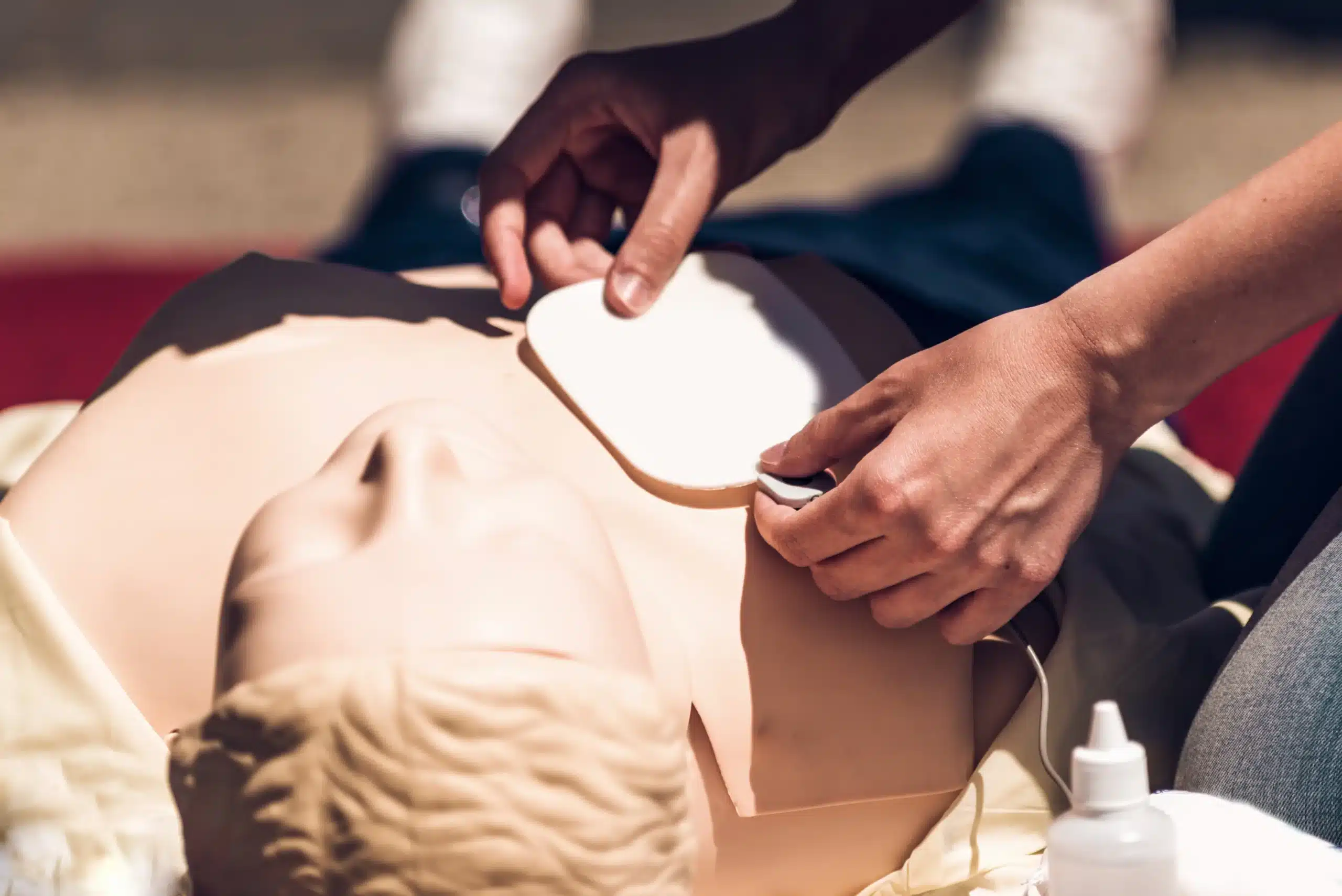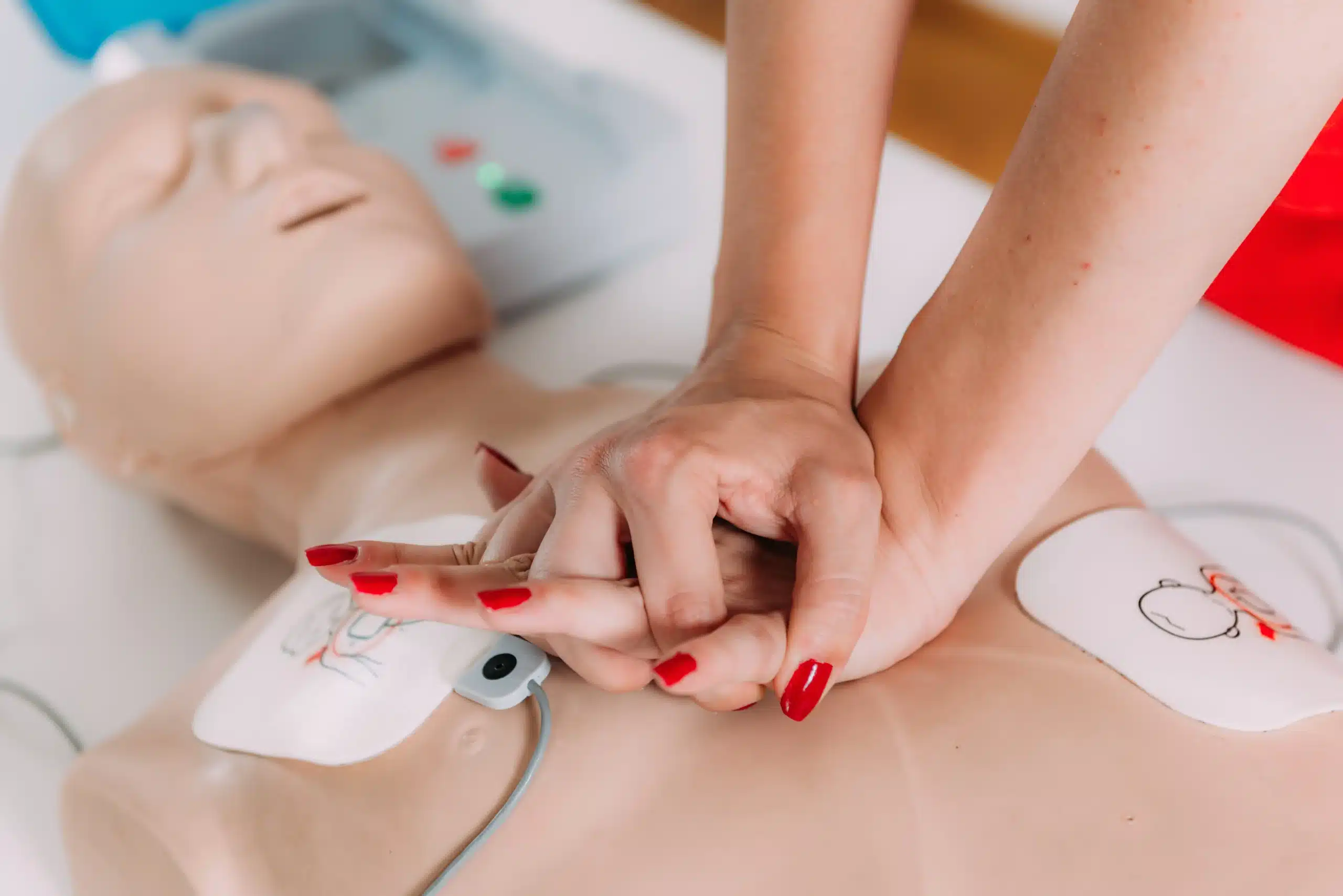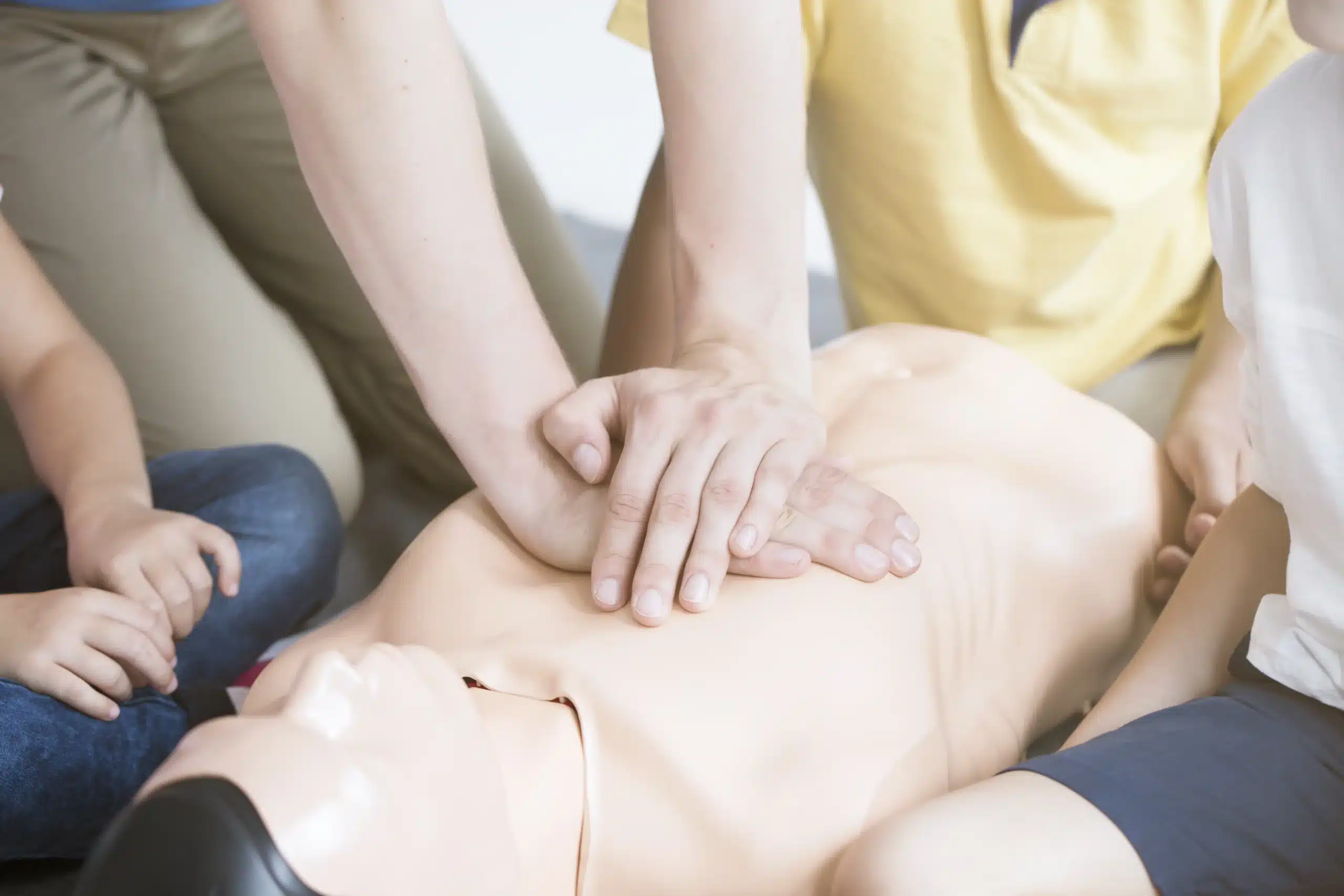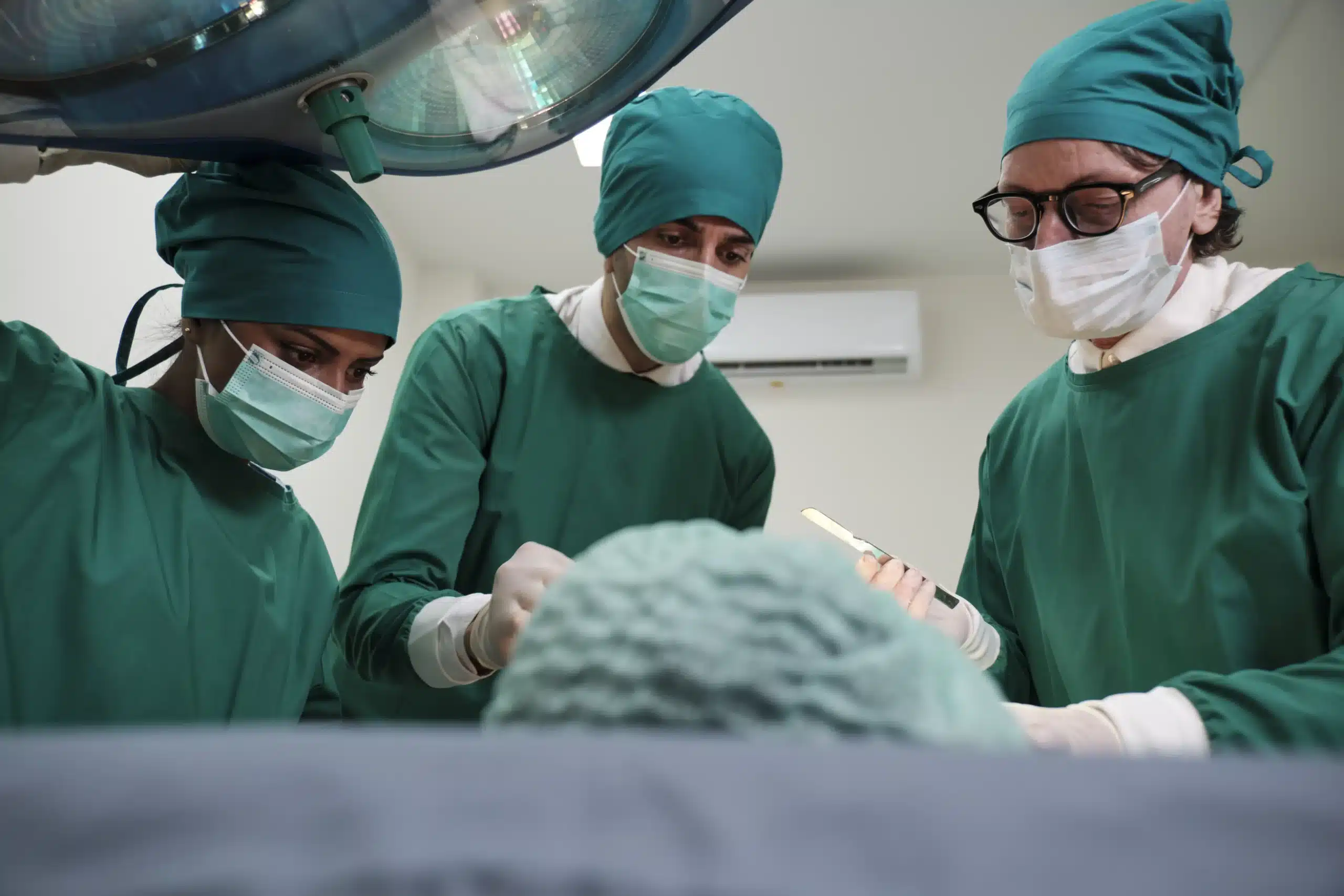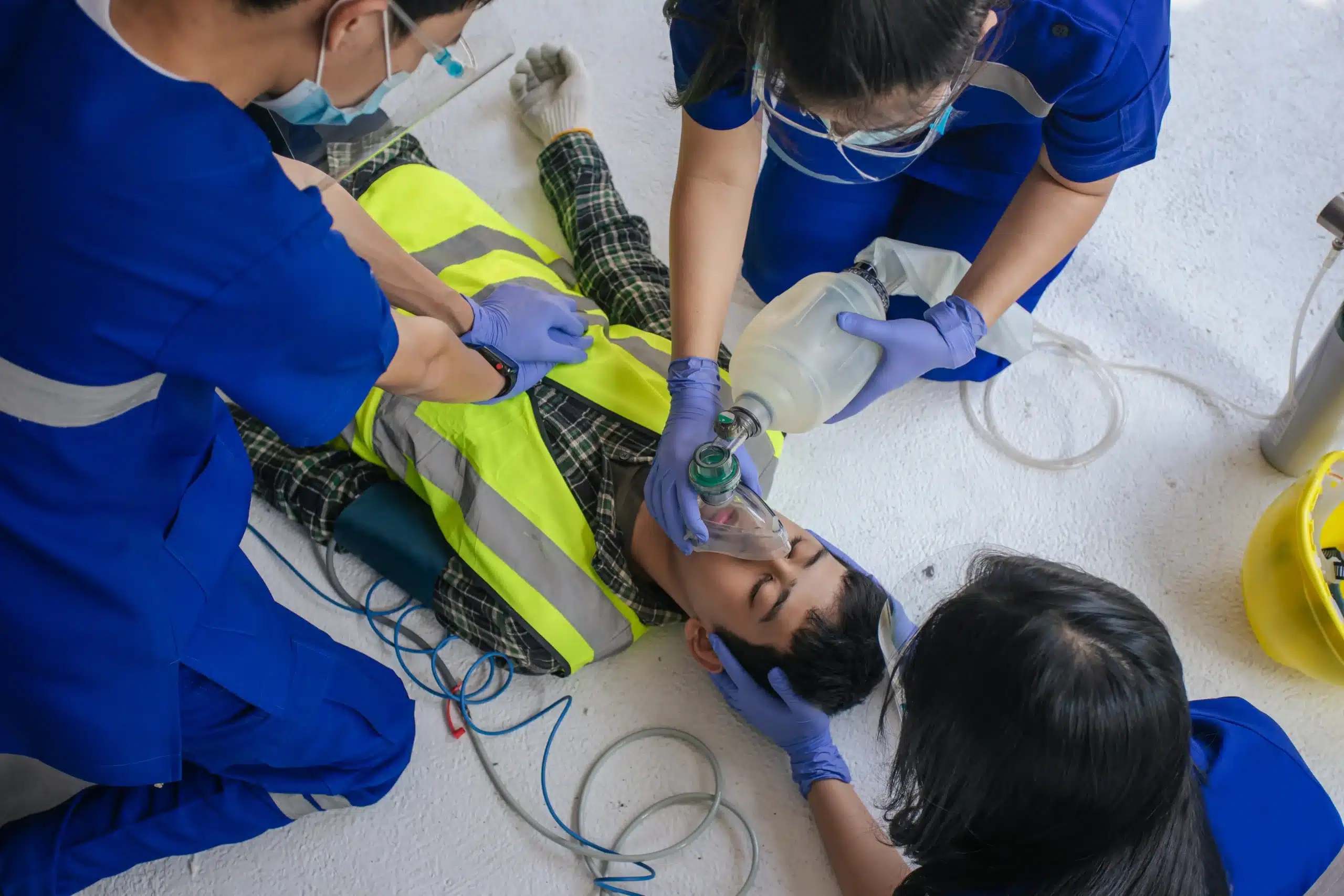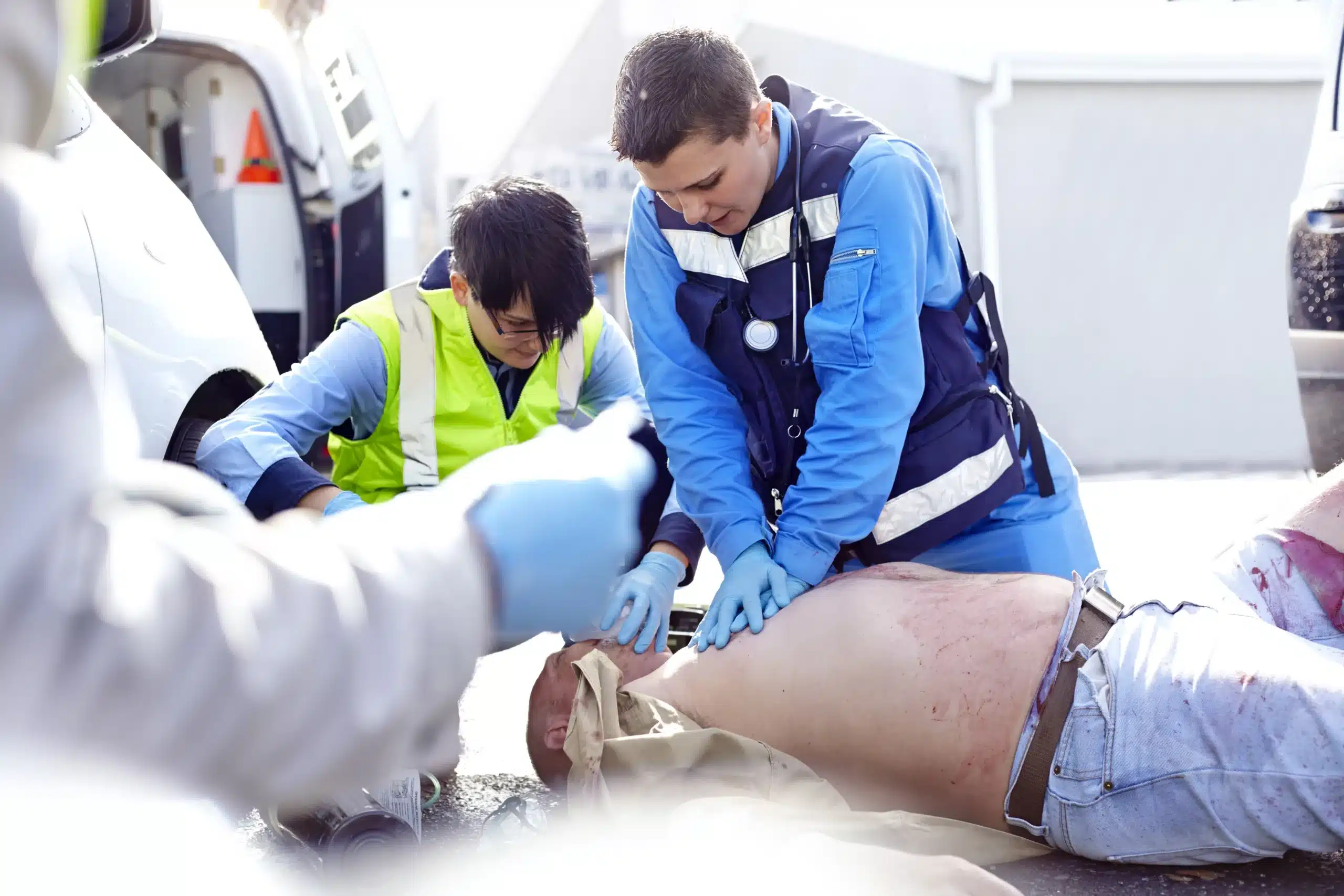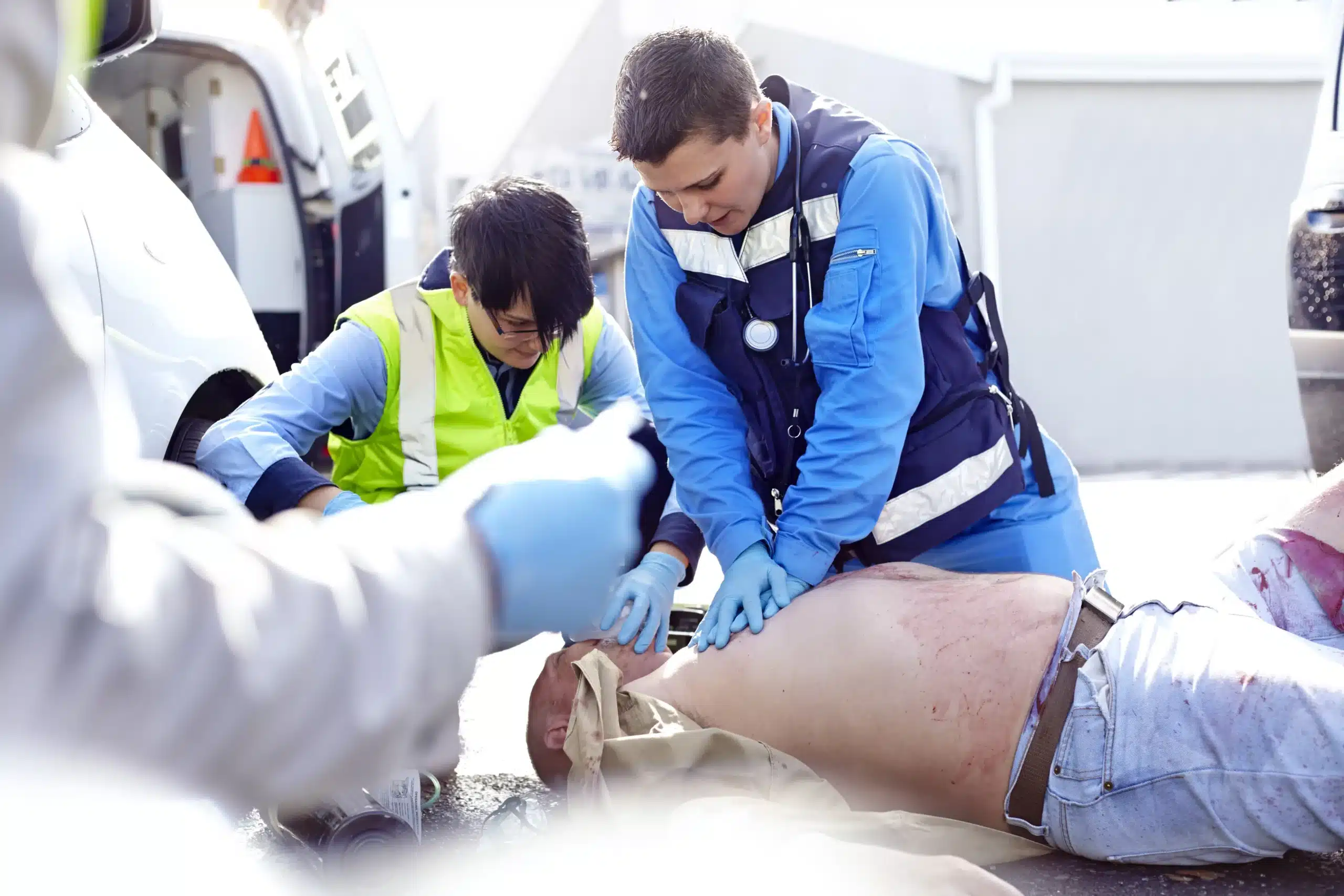Emergencies can happen anytime, anywhere. Being prepared isn’t just about having a first-aid kit; it’s about having the skills to use it effectively and provide essential care until professional help arrives. BLS training equips you with these life-saving skills. This guide will cover everything you need to know about BLS, from what it entails to why it’s so crucial. We’ll also discuss how to find “bls training near me,” the different training formats available, the costs, and what a typical BLS course involves. Let’s equip you with the confidence and competence to handle emergencies effectively.
Key Takeaways
- BLS training provides essential life-saving skills: Learn CPR, AED use, and airway management to confidently respond to medical emergencies. Explore in-person, online, or blended learning options to fit your needs.
- BLS certification benefits everyone: Whether you’re a healthcare provider, teacher, parent, or simply want to be prepared, BLS training empowers you to act in critical situations.
- Hayward CPR Classes offers convenient and affordable options: Get AHA-certified BLS training with various course formats and group discounts. Contact us to find a class that works for you.
What is BLS Training & Why Do You Need It?
Basic Life Support (BLS) training gives you the skills to respond to life-threatening emergencies. It’s about more than just CPR—BLS certification equips you to provide critical care until professional medical help arrives. This training empowers you to make a real difference in crucial moments. Think of it as a fundamental toolkit for anyone who wants to be prepared for emergencies. BLS covers essential life-saving techniques, focusing on high-quality CPR, using an AED, and basic airway management. These skills are crucial for addressing cardiac arrest and other emergencies requiring immediate intervention.
What BLS Covers
BLS training provides a comprehensive approach to emergency care. You’ll learn to recognize the signs of a cardiac arrest or respiratory emergency and provide effective chest compressions and rescue breaths. The training also covers the proper use of an automated external defibrillator (AED), a portable device that can help restore a normal heart rhythm. Additionally, you’ll learn basic airway management techniques to help someone choking or having difficulty breathing.
How BLS Saves Lives
Bystanders trained in BLS play a vital role in improving survival rates for people experiencing cardiac arrest. Immediate CPR can double or even triple a person’s chance of survival. BLS training30180-5/fulltext) equips individuals to respond effectively in these critical situations, providing essential care until paramedics arrive. The ability to perform high-quality CPR and use an AED can significantly impact the outcome of a medical emergency.
Who Needs BLS & Why
While healthcare providers and medical professionals often seek BLS certification, it’s a valuable skill for everyone. From parents and teachers to coaches and office workers, knowing BLS can make a difference in any setting. BLS training is important for anyone who wants to be prepared to help in a medical emergency. It empowers individuals to take action and potentially save a life, regardless of their professional background. Consider BLS training a personal safety skill, much like knowing how to swim or drive—it’s a valuable asset that can benefit you and those around you.
Find BLS Training Near You
Finding the right BLS training program is easier than you think. Here’s a breakdown of where to look and what to consider:
Local Training Centers & Hospitals
Hospitals and dedicated training centers often offer BLS certification courses. The American Red Cross, for example, provides BLS certification and renewal training in numerous locations. These programs typically include comprehensive, instructor-led sessions, making them a great option for hands-on learners. Check with your local hospitals and community centers for available courses.
Community Groups & Schools
Many community organizations and schools offer BLS training. These classes are sometimes integrated into health-related programs or offered as standalone courses. Implementing BLS training in schools30180-5/fulltext) has been shown to improve survival rates in emergencies, highlighting the importance of community-based training initiatives. Contact local schools, community colleges, or recreation centers to inquire about BLS training opportunities.
Online Search Tools
Online resources can help you locate BLS training near you. A quick search for “BLS training near me” will yield a variety of results, including training centers, class schedules, and cost information. Online courses and resources are also a convenient way to stay updated on the latest BLS guidelines and techniques.
Hayward CPR Classes: Your Go-To AHA Training Center
Hayward CPR Classes is your trusted source for American Heart Association (AHA) certified BLS training in Hayward, Union City, and San Leandro, CA. We offer BLS certification courses designed to equip you with the skills to respond confidently in critical situations. As a woman-owned AHA Training Center, we pride ourselves on providing high-quality training at competitive prices. We also offer group discounts, making it an affordable option for businesses and organizations. Contact us today to learn more.
Choose the Right BLS Training Format
Finding the right BLS training format depends on your learning style, schedule, and budget. Let’s break down the most common options so you can make the best choice.
In-Person Training: Hands-On Learning
In-person BLS training offers a structured, hands-on learning experience. You’ll work directly with a certified instructor and other students, practicing skills like CPR and AED use on mannequins. This format is ideal for people who learn best through physical practice and direct interaction. The face-to-face instruction allows for immediate feedback and personalized guidance, ensuring you master the techniques. For some, the classroom setting also provides a valuable opportunity to ask questions and learn from others’ experiences.
Online BLS Courses: Learn at Your Own Pace
If your schedule is packed, an online BLS course might be the perfect fit. These courses offer flexibility, allowing you to complete the training modules at your own speed and convenience. Online courses typically cover the same core material as in-person classes, including CPR, AED use, and airway management. Just keep in mind that online courses may require an in-person skills assessment for full certification. This blended approach is becoming increasingly popular.
Blended Learning: The Best of Both
Blended learning combines online convenience with the benefits of hands-on practice. You’ll complete the theoretical coursework online, then attend an in-person skills session to demonstrate your abilities and receive feedback from an instructor. This format offers a balanced approach, catering to different learning styles and schedules. It’s a great option if you want the flexibility of online learning but also value the personalized attention of an in-person session.
Course Structure & Getting Certified
Most BLS certification courses follow a similar structure, regardless of the format. They typically involve lectures, demonstrations, and hands-on practice. You’ll learn how to recognize life-threatening emergencies, provide high-quality CPR, use an AED, and relieve choking. BLS certification is usually valid for two years. Recertification courses are available to keep your skills current and maintain your credentials. Check with your chosen training provider for specifics on course length, certification requirements, and renewal options. At Hayward CPR Classes, we offer various formats to fit your needs, so contact us to learn more.
BLS Training Costs & Accessibility
Getting BLS certified is an investment in your skills and ability to help others. Let’s break down the typical costs and explore ways to make training more accessible.
Typical Prices & Discounts
BLS certification costs vary based on location and training provider. Generally, expect to pay between $30 and $150. For example, CPR Certification Charlotte notes that CPR and AED training in Charlotte, NC, typically ranges from $40 to $100 (CPR Certification Charlotte). RCPALS prices BLS for healthcare providers around $65 for initial certification and $60 for renewal (RCPALS). Look for potential discounts—some providers offer lower rates for students, seniors, or groups.
Financial Aid Options
While financial aid specifically for BLS training isn’t always advertised, check with local training centers. Many offer flexible payment plans or adjust fees based on income. Don’t hesitate to ask about potential financial assistance.
Employer-Paid Training
If you’re in healthcare, your employer might cover your BLS certification. Many healthcare organizations understand the value of trained staff and invest in professional development. Check with your HR department about potential reimbursement or direct payment.
Group Discounts at Hayward CPR Classes
Hayward CPR Classes offers discounts for group bookings. This is a great option for colleagues, classmates, or community members. Learning together can be fun and efficient, and our group discount makes it even better. See our group discount page for more information.
What Happens During BLS Training?
BLS training equips you with the skills to respond to life-threatening emergencies. It’s a comprehensive program covering essential techniques like CPR, using an AED, and relieving airway obstructions. Let’s break down what you can expect during your BLS training.
Course Content & Length
BLS certification courses cover core life-saving skills, focusing on high-quality CPR for adults, children, and infants. You’ll learn how to recognize the signs of someone needing CPR, how to perform chest compressions and rescue breaths, and when and how to use an AED. Airway management techniques are also a key part of the curriculum, teaching you how to open a patient’s airway and provide ventilation. For more details about our BLS course content, visit our BLS page.
Hands-On Practice & Skills Tests
BLS isn’t just about learning the theory—it’s about mastering the skills. Expect significant hands-on practice using mannequins to simulate real-life scenarios, giving you the chance to build muscle memory and confidence. Most BLS courses, including those at Hayward CPR Classes, require a written exam and a hands-on skills test. You’ll need to attend the entire session to receive your American Heart Association BLS certification.
Getting Certified & How Long It Lasts
After successfully completing the course and passing both the written and practical exams, you’ll receive your BLS certification card, valid for two years. This timeframe ensures that healthcare providers and other professionals stay up-to-date with the latest guidelines and maintain their skills.
Recertification & Staying Up-to-Date
Staying current with your BLS skills is crucial. You’ll need to recertify every two years to maintain your credentials. Contact us to learn more about recertification options and maintaining your BLS certification. You can find our contact information and details about our group discounts on our contact page. We offer a variety of courses and schedules to fit your needs.
Related Articles
- BLS for Healthcare Providers in Union City: A Guide – Hayward CPR Classes
- BLS Certification in Hayward: Everything You Need to Know – Hayward CPR Classes
- Find Basic Life Support (BLS) Training in Union City – Hayward CPR Classes
- BLS Courses in Hayward: The Complete Guide – Hayward CPR Classes
- BLS Courses in Union City: What to Know – Hayward CPR Classes
Frequently Asked Questions
Is BLS certification the same as CPR certification?
BLS certification is more comprehensive than basic CPR training. While CPR is a core component of BLS, BLS also includes training on AED use and basic airway management, providing a broader skill set for responding to medical emergencies. It emphasizes a team approach and high-quality CPR techniques.
How long does it take to get BLS certified?
The time commitment for BLS certification varies depending on the course format and provider. In-person courses typically take a full day, while blended learning options might involve shorter in-person skills sessions combined with online coursework. Check with your chosen training provider for their specific course duration.
How much does BLS certification cost?
BLS certification costs typically range from $30 to $150, depending on your location and the training provider. Many providers offer discounts for groups, students, or other specific populations. It’s always a good idea to inquire about potential discounts or payment plans when you register.
How often do I need to renew my BLS certification?
BLS certification is valid for two years. To maintain your credentials and stay up-to-date with the latest guidelines, you’ll need to recertify before your current certification expires. Recertification courses are readily available and often shorter than the initial certification course.
What if I have a busy schedule? Can I still get BLS certified?
Absolutely! Many training providers offer flexible options to accommodate busy schedules. Online BLS courses allow you to complete the theoretical coursework at your own pace, and blended learning formats combine online learning with shorter in-person skills sessions. This allows you to fit the training into your schedule without significant disruption.
